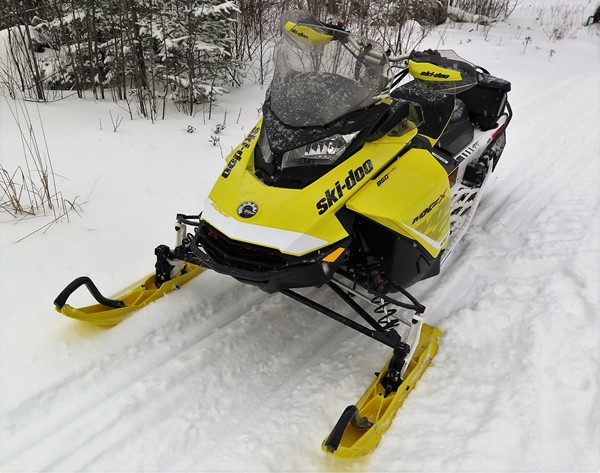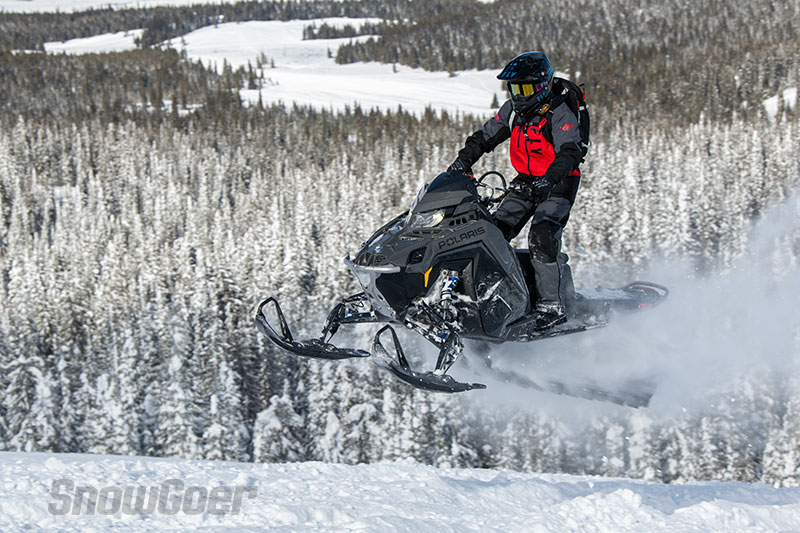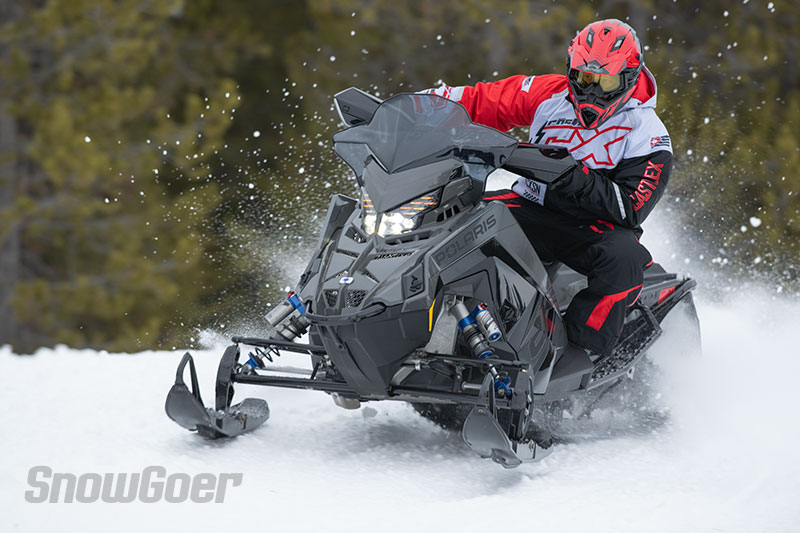
For Team Snow Goer, late December is traditional break-in time for our fleet of new snowmobiles, and this year is no different. A promising early start to the snow season here in southern Minnesota dissipated when Ma’ Nature threw warm temperatures and a ton of rain at us over the Christmas holiday. So, we took turns pointing trucks and trailers north and found very good conditions in the traditional North Shore area of Minnesota. I rode with two friends there on Wednesday, and Managing Editor Andy Swanson is there with other folks today, as this is being written.
Starting from the main lot at Two Harbors, the C.J. Ramstad North Shore State Trail on Wednesday, December 28, featured a bit of loose snow on top of a slick, solid base with light trail chop. We soon found the groomers while traveling north and ended up riding on some downright ideal trails for a while all the way up past Finland. Leaving the North Shore Trail on the Tomahawk for the blast up to the Trestle Inn found us in full-on mogul territory – the section hadn’t been groomed yet this year and was downright rugged. After a hearty meal, we turned around and ran the same trails back to the tow vehicle.
On this particular trip, we broke in our 2017 Arctic Cat ZR 8000 Sno Pro 137, Polaris 600 Rush XCR and Ski-Doo MX Z X 850 E-TEC, and offer these brief initial thoughts on each machine. Let us stress right up front, however, that these machines were fresh out of the box when we started, so break-in modes were in full force and we haven’t done a lot of tweaking with suspension settings and such.
2017 Ski-Doo MX Z X 850 E-TEC

With its new REV Gen4 chassis and 850cc E-TEC-injected twin, there was a lot here that we wanted to see and feel in production form, and our MX Z X demo sled did not disappoint.
The 850 engine was crisp and strong – so much so that one rider who was experiencing it for the first time said during an initial trail break that, “it’s a great motor, but I think it’s too much for trail riding.” And that’s while it was still in break-in mode! The acceleration pull was impressive, topped only by its incredible run quality.
Beyond that, the entire snowmobile felt like it had absolutely nothing holding it back – from the clutches through the rest of the drive line, it seemed as if there were absolutely no drag or friction anywhere in the system. It was described as being “super free,” with one rider suggesting that the machine felt as if it would roll a mile with one push on the rear bumper. Moreover, the suspensions offered a very plush ride – it almost felt too soft at first, but it never bottomed when charging hard through the worst moguls on that ungroomed 5-mile stretch.
Riders who were with us toyed with the rear suspension settings using the running-board-mounted Quick-Adjust System, but were disappointed to not see any clickers on the ski shocks. However, the tunable Pilot TS skis truly came in handy on this day, which featured varying trail condition. The blade-style runners got turned out for awhile when we started in loose snow, then turned back in as the trail got more firm.
The MX Z took by far the least amount of gas on our 120-mile sprint, using 8.9 gallons of fuel during the day of heavy throttle use for a 13.5 mpg average.
2017 Polaris 600 Rush XCR

The Axys chassis and 600 Cleanfire engine that combine to make up the base of the new 2017 600 Rush XCR were known quantities going into this ride, but the machine still impressed the boots and socks off of our riders nonetheless.
Compared to the other two machines on our ride, the Rush XCR felt the most aggressive and the most playful. Some credit could go to its small stature – it was the only sled in this run with a 120-inch track (the MX Z X featured a 129-inch shoe while the Cat had a 137-incher). But the XCR package certainly deserves credit as well. It’s not as light as a Pro-S package, for example, but compared to the other two machine ridden this day it was still a featherweight, plus it comes with beefed up components, a light sway bar and high-end Walker Evans Hi-Low Compression Adjustable Piggyback Needle shocks have that whip-me/beat-me appeal. Who were we to turn down such a request?
With that in mind, we crawled all over the machine and ran it fairly hard, and it was up to the task and then-some – always responding to the rider’s every wish. The Pro-Steer skis stayed on task and the suspension setup provided an active ride that wasn’t as numbing as the Ski-Doo but instead provided more positive feedback to what was happening beneath the sled. Of the three sleds on our ride, it felt the most connected to the trail.
The 600-class engine was a bit outclassed in this trio in terms of raw horsepower, but it remains one of our favorite mills for trail riding thanks to its fun and reactive powerband. It was a thirsty bugger, however – drinking 12.6 gallons of 91 octane juice on our 120-mile adventure for a 9.5 mpg average. Maybe once past break-in mode it will improve?
2017 Arctic Cat ZR 8000 Sno Pro 137

Speaking of known quantities, the ZR 8000 Sno Pro 137 utilizes the time-tested combination of the ProCross chassis and the Suzuki 800 H.O. engine. In fact, if one merely peruses spec charts, the lesser-informed rider might think there’s not much difference between this machine and a 2012 ProCross XF 800 Sno Pro. Yet virtually every year since then Arctic Cat has made alterations to this chassis and its suspension settings, and that’s helped refine the combination significantly.
Our 2017 model showed up ready for action, though a high windshield was attached to replace the decorative-but-hardly-functional window that comes standard with the Sno Pro package. The 800 twin provided its usual muscular pull every time we tapped the throttle – though it would load up on fuel occasionally, causing us to jack the throttle a few times to get it clear out. That, of course, led to the inevitable discussion later in the day about how Arctic Cat will replace this engine, given that this is allegedly the last year of the Arctic Cat/Suzuki powerplant agreement.
The chassis provided its usual roomy ergonomics, though one rider who had just come off of the MX Z noted that he felt that he couldn’t get far enough forward on the Cat chassis after experiencing Ski-Doo’s REV Gen4.
The ride quality on the big Cat was good overall, though it was our most condition-affected machine on the ride. It proved to be a good dance partner with that aforementioned choppy section, and in the “normal” trails in the middle of the day. But on the more slippery trails toward Two Harbors at the beginning and end of our round-trip ride it took more concentration than the other two to keep it on course, as the back end felt like it wanted to pass the front on several occasions.
The ZR 8000 Sno Pro 137 was our thirstiest ride on this break-in day, guzzling 13.75 gallons on the 120-mile ride for just 8.7 mpg.






